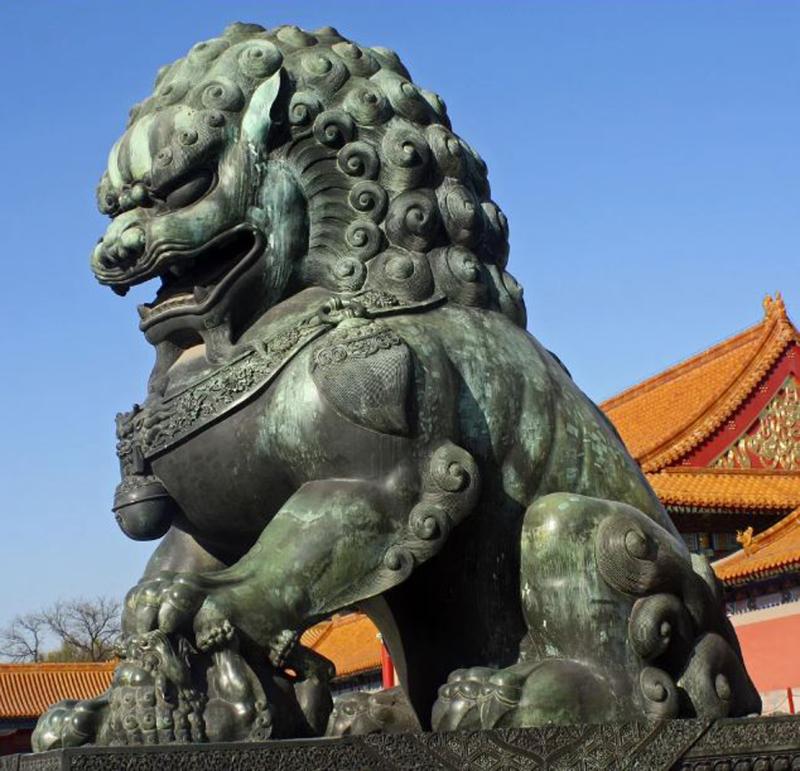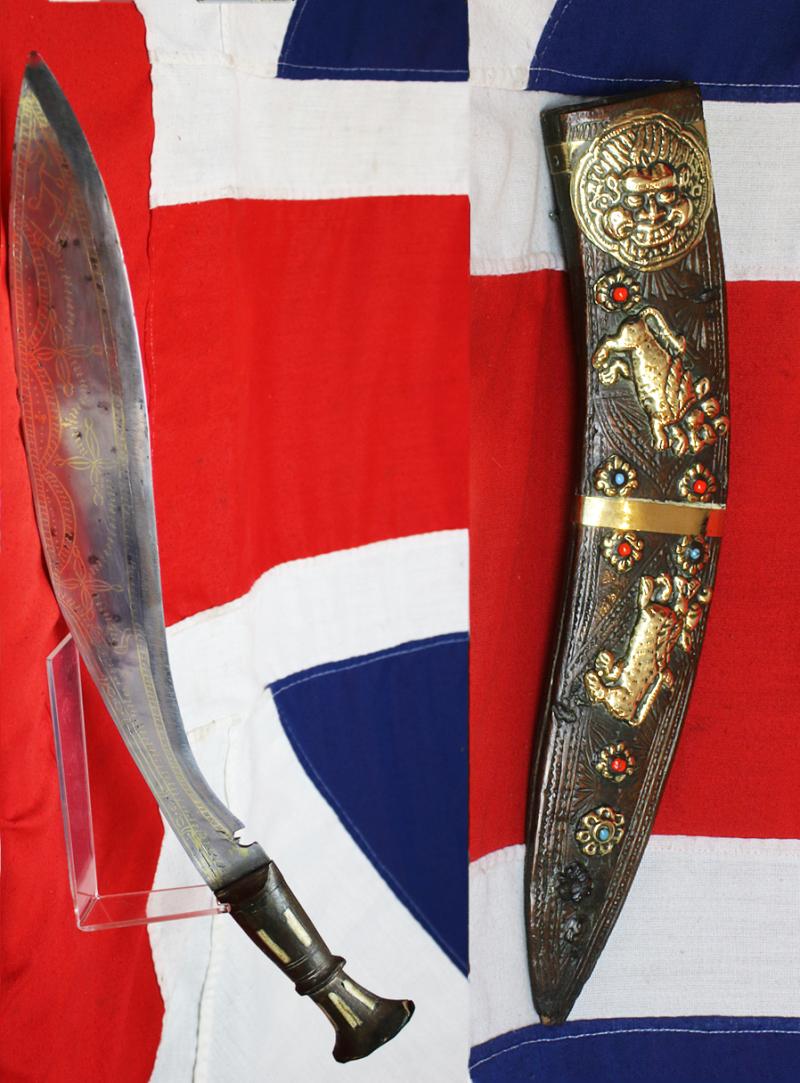A Beautiful & Very Unusual Large Antique Tibetan Buddhist Ceremonial Ritual Kukri With Decor of Dragon Chinese Foo Lion Dog's. Turqoise and Coral Bead Inset
The fine steel blade is inlaid with profuse gold alloy inlay of geometric patterning and flowers.
A most rare Tibetan Buddhist ritual kukri, by far the most famous type is the famous Gurkha's kukri, his inimitable weapon of war. However this is a stunning antique type from Nepal, very rarely seen in the west, most likely a ceremonial piece used by a Tibetan noble.
The kukri came to be known to the Western world when the East India Company came into conflict with the growing Gorkha Kingdom, culminating in the Gurkha War of 1814–1816.
It gained literary attention in the 1897 novel Dracula by Irish author Bram Stoker. Despite the popular image of Dracula having a stake driven through his heart at the conclusion of a climactic battle between Dracula's bodyguards and the heroes, Mina's narrative describes his throat being sliced through by Jonathan Harker's kukri and his heart pierced by Quincey Morris's Bowie knife. In the hands of an experienced wielder Khukuri or Kukri is about as formidable a weapon as can be conceived. Like all really good weapons, Khukuri's or Kukri's efficiency depends much more upon skill than the strength of the wielder. And thus so that it happens, that a diminutive Gurkha, shorter and slight in regards to his stature, could easily cut to pieces a gigantic adversary, who simply does not understand the lightly built Gurkha's mode of attack and fearsome skill. The Gurkha generally strikes upwards with his Kukri, possibly in order to avoid wounding himself should his blow fail, and possibly because an upward cut is just the one that can be least guarded against however strong his opponent.
In the 20th century through the WW1 and WW2 period they continued to make silver or plated mounts presentation kukri, but slightly shorter and wider blades and the criteria for presentation became more flexible.
Code: 25965
795.00 GBP






